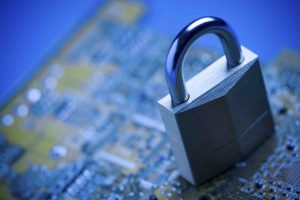Today, in the online internet landscape, people have access to unlimited information and are exposed to countless types of data.
Anyone has the power to download, use, and even re-write most things they find, especially when it comes to downloading and installing software packages for a program. As a result of this, there is an issue plaguing the internet, known as fraudulent programs and applications.
These infected programs and applications are usually filled with viruses, malware, or ransomware implemented by hackers. It slows down their computer, monitoring their activity online or locking their files down and asking for payment to unlock them.
Within this online landscape, it is essential to protect your code that is written for these programs. So, your customers know that they own legitimate software, distributed by your company, that is ready to install on their devices and is safe to use. To achieve this, you need to sign your code with a digital certificate.
What Exactly Is Code Signing, And How Does A Code Signing Certificate Help Protect the Integrity of Your Software?
As a developer, you need to develop an identity to mark your code with that helps the end-users identify the software you provide.
This identity is what will inform future users that the software package they are about to install on their devices is legitimately written, made, and distributed by you. It will be lessening their chances of being scammed and potentially having their computers infected with viruses, malware, or ransomware.
Code signing is the process of marking your code with a unique sign that helps people identify you as the owner of the code. As well it provides cryptographic protection against its modification or potential theft.
By purchasing a code signing certificate, the certification authority or CA for short manages and has the responsibility to approve software code.
Through this process, your software package, and the code behind it is more likely to be trusted by the end-users, as it seems more legitimate.
This process differs depending on if you are an individual or a company, but the main goal is simple, with a certificate, people are more likely to trust and use your software.
Code signing helps authenticate the author of a certain software package and its code, ensuring that the software you eventually install on your device hasn’t been modified or infected with viruses, malware or ransomware, and in turn helping you maintain a higher level of security on your device.
Where and How Is Code Signing Used to Protect Software?
Code signing is achieved with digital certificates.
These certificates go a long way towards giving a certain software package some identity before it is officially published to the end users.
An example of this would be if you want to download a software package that claims to be developed by Microsoft, within the package, if you read a generic name or another name in general such as John Doe, you’d be suspicious and not trust that software, this is because Microsoft has their own digital signature and certificate that they sign all of their software with, and within their operating system you can view exactly who developed each software package that you attempt to install on your device, and they even warn you if you are about to install a software package that has not been certified and can potentially be harmful to your device.
The Windows operating system itself will warn you that a software package is unsigned and not certified before allowing you to install it, leading to a higher level of security for your system.
To summarize, digital certificates are approved by certificate authorities, these certificates help the end user know that the software package they are downloading and installing is legitimately made by the person or company that has claimed to have written it, as well as giving the publishers a way to track at what rate their software is being distributed both locally and through the internet, helping them visualize the growth of their software through the help of analytics.
The length of these certificate expires up to two years, because of this, the software packages and certificates have a higher level of security.
Renewing and changing private and public keys on a yearly level improves security by ensuring that they are up to date and valid, while disposing expired and potentially compromised certificates.
Where Can You Usually Find Signed Code?
Signed code is the fundamental key towards ensuring that a software package that is being distributed online or locally is legitimately created by the person or company that has claimed to have created it.
An example of this would be the Windows software packages that can be manually installed on a device, or the built-in software packages that can be downloaded to help improve the operating system, both in speed and security.
These software packages have a clear indication that they were in fact made and signed by Microsoft, leading to a higher level of trust and security.
The same thing applies towards the MacOS operating system, the only exception to this rule being the Linux operating system, which usually contains software packages with unsigned code.
Code Signing Certificate Can Be Used for Below Platforms:
- Microsoft Authenticode
- Microsoft Office & Microsoft VBA
- Microsoft Kernel-Mode Code Signing
- Adobe® AIR
- Java
- Mozilla Objects
Conclusion
Code Signing is an extremely important factor to consider when developing software that you plan on distributing both locally or online, as it helps you protect your code and encrypt it with a key, which also leads to a higher level of security and makes it less likely for people to modify or corrupt the software and potentially leaving the end-users at a risk when trying to install it.












